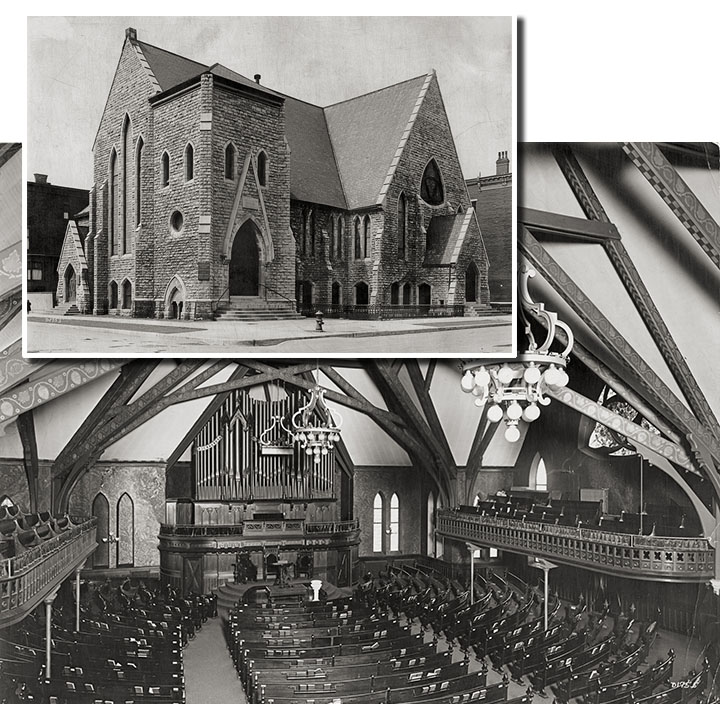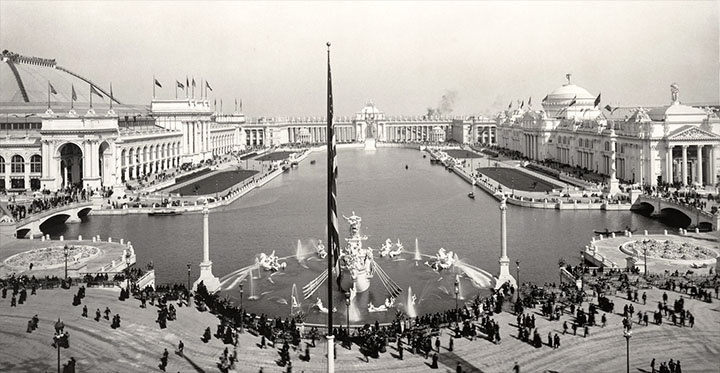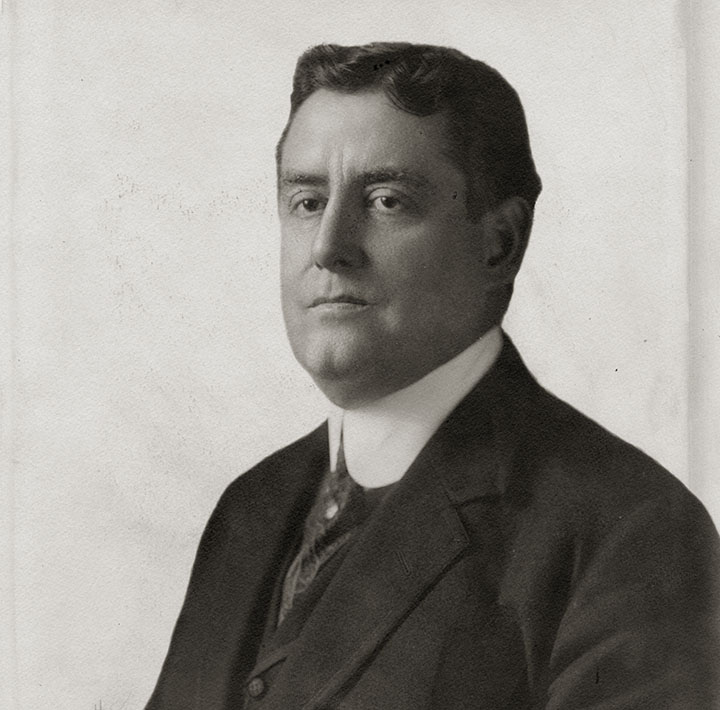“Make no little plans; they have no magic to stir men’s blood.”
—Daniel Burnham
Fourth Presbyterian Church’s early years had certainly been defined by catastrophe and controversy, but the congregation’s next several decades would parallel the improbable recovery taking place in Chicago—a phoenix rising from the ashes of the Great Fire.
Early reconstruction of the city was rapid and makeshift, leading to a second fire in 1874. The city subsequently outlawed wooden buildings in the downtown area, a decision that spurred innovation and exacerbated inequity, as fire-resistant building materials gave rise to skyscrapers and commercial buildings while the cost of those materials effectively priced out poorer residents.
Despite this unequal recovery, Chicago’s population continued to skyrocket due to its unique mixture of location, production, infrastructure, and opportunity. By 1890 the city’s population had tripled in the nearly two decades since the Great Fire, making it the second city in the United States to reach one million residents!
In a similar vein, Fourth Church underwent its own period of recovery and rapid growth in the decade after the fire. Without a pastor for almost a year and a half after David Swing’s resignation in October 1875, the church relied on the strength of the Session and groups like the Ladies’ Benevolent Society and Mothers’ Mite Society to continue the church’s work and ministry.
John French eventually arrived as pastor in 1877, and although his health forced him to resign less than three years after his arrival, he was able to help the congregation heal from Swing’s departure and fully pay off the substantial debt facing the congregation after the construction of the 1874 church building at Rush and Superior (due in no small part to the return of Cyrus McCormick to membership).

Designed by architect John R. Neff and dedicated in early 1874—only twenty-seven months after the Great Chicago Fire destroyed our first church structure—Fourth Church’s second building was on the northwest corner of Rush and Superior.
With the emotional and financial state of the church improved, the congregation slowly began to expand in size and influence. Herrick Johnson (1880–1885) became the first of multiple Fourth Church pastors to be elected as Moderator of the denomination’s General Assembly, and during his five years with the congregation a handful of church members helped to establish Presbyterian Hospital in conjunction with Rush Medical College.
Johnson’s successor, Melancthon Woolsey Stryker (1885–1892), not only doubled Fourth Church’s membership during his tenure but also invested a great deal of time and energy in neighborhood evangelism, an endeavor that would become central to the congregation’s identity over the following decades.
This sense of rapid growth, change, and possibility culminated in 1893 as Chicago hosted the World’s Columbian Exposition (celebrating the 400th anniversary of Columbus—ahem—“discovering” America) and the first ever Parliament of the World’s Religions.
Much has certainly been written about the highs and lows of the World’s Fair, but there can be no doubt regarding the importance it had in placing Chicago on the map as one of America’s preeminent cities, validating the braggadocious bluster of the “Windy City.”

The 1893 World’s Fair, built on 700 acres around Jackson Park on the South Side, welcomed more than 27 million visitors in the six months it was open.
The fair also captured the wider sense of ambition and optimism present at the turn of the century, exemplified by the famous opening address of Vivekananda, the Hindu monk who served as a leader in the Parliament of the World’s Religions: “Sectarianism, bigotry, and fanaticism have long possessed this beautiful earth . . . but their time is come; and I fervently hope that the bell that tolled this morning in honor of this convention may be the death-knell of all fanaticism.”
Within the church, this sense of possibility and promise was palpable as well. In 1900, one magazine chose to rename itself The Christian Century as a nod to what lay ahead for the wider church. And although Fourth Church certainly had very capable pastors following Stryker’s tenure, this sense of ambition helps explain the congregation’s decision in 1908 to pursue a dynamic young preacher named John Timothy Stone as their next pastor—a leader who could once more bring Fourth Church the national profile David Swing had.
Stone was the pastor of Brown Memorial Presbyterian Church, a prominent congregation in Baltimore, and had recently become an author as well. The Pastor Nominating Committee had identified his gifts of evangelism, energy, and powerful preaching as being exactly what the church needed to begin a new era. Stone, however, did not feel the same, stating to the committee that Fourth Church needed to have “a larger work and a new and better equipped [building].” He turned down their call shortly after being offered the position.

A 1909 portrait of John Timothy Stone
Rebuffed but undeterred, a handful of members began strategizing about how they might convince Stone to change his mind, leading to a hastily called congregational meeting two days after Christmas to obtain a $100,000 commitment for a new building. Equipped with the promise of a new building and funds to help achieve it, Cyrus McCormick Jr. personally traveled to Baltimore to help the Pastor Nominating Committee make their case once more, hoping it would be enough to change Stone’s mind and convince him to come to Chicago.
• • •
This article is written in deep gratitude and appreciation for Robert (Bob) Rasmussen (1931–2021) and the immense contributions he made to preserving Fourth Church’s history. From countless hours cataloging and examining documents as the church archivist to Bob’s passion for sharing the history that he gleaned, this historical series would not have been possible without him.
• • •
< Back to Part 1 • On to Part 3 >